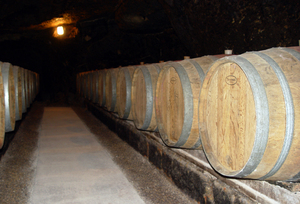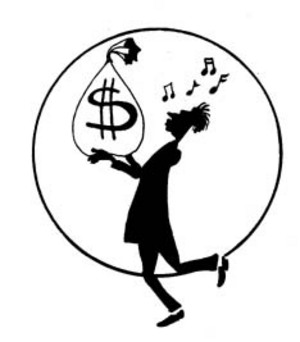White wine comes from white grapes or red ones whose skin has been removed prior to fermentation. These are picked at night, when acids that give the wine its crisp flavor are its highest. To give it a delicate flavor, the grapes go through two presses: the first press, the free run, is extracted with little pressure from the pulp, and yields a clear, pure liquid. The second one, called the press juice, uses a winemaker or vintner for a heavier amount of pressure in extracting juice from the skin. It is of lesser quality than that of the free-run, however, it does increase the total volume by 15-30%. Unlike red wine, the two juices are filtered and fermented separately, without the seeds.
White wine may be fermented in stainless steel tanks to produce a crisp and clean taste. If a full-bodied flavor is desired, oak barrels may be used which have tannins, the same compound found in grape skin responsible for the robust flavor, color and smell of red wine. First, yeast is added to convert sugar to carbon dioxide and alcohol. Approximately half a gram of alcohol is produced per gram of sugar converted. Next, specific bacteria convert malic to lactic acid to yield a milder and sweeter flavor. Temperature is set at 15 to 18 ‹C (60 ‹F) and along with controlled heat and light, the wine is fermented and aged from 4 to 6 weeks.
The finishing process stabilizes the wine before bottling. It goes through ¦fining˜, wherein agents such as egg whites, gelatin or milk proteins are added to bind debris. The wine is then filtered by decantation to remove any remnant particles of grape and yeast. Sulfites may also be added to enhance preservation. Different batches of wines may be mixed and matched to make adjustments. Finally, the wine is ready for bottling.
White wines do not age well for long; they should be consumed within two years from the vintage date. It must be kept in a vibration-free, dark room with a consistent temperature, about 55 to 60 degrees. Ultraviolet light and hot temperature not only alter the character of the wine but also causes spoilage. The bottle must be placed horizontally to keep the cork from drying out. It is therefore, best to store wine in a closet or in a basement cellar.
There are a few things to bear in mind in sampling white wine. Mostly all of the senses must be used to enjoy a glass completely. It begins by the inspection. White wine should be clear, without any sediment, and straw-colored, with shades ranging from light green to pale yellow. The glass is then swirled to release the aroma before a quick whiff. A wet-forest smell indicates malo-lactic fermentation, and a hint of oak may be from the barrel from which it was aged. It may also bear a fruity or floral scent. Now that the aroma roused the taste buds, a sip is taken, swirling the wine around the tongue. The first taste is meant for examination; the texture, consistency and balance of concentrations of fruit, tannins and acid. The next sips are made for utter pleasure. A good wine should leave an impression and a memory of a great aroma and taste.
From making to storing to tasting it, white wine truly proves to be a masterpiece and an art.



